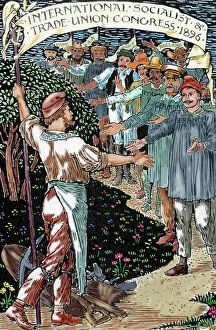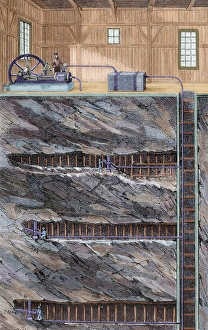Workerism Collection
"Workerism: Uniting the Labor Force for Rights and Revolution" Trade unions have long been at the forefront of advocating for workers' rights
All Professionally Made to Order for Quick Shipping
"Workerism: Uniting the Labor Force for Rights and Revolution" Trade unions have long been at the forefront of advocating for workers' rights, as seen in the historic Manifest published by the World Congress in London. This pivotal document highlighted the need to address labor issues during the Industrial Revolution, a time when workers toiled tirelessly within English factories. Even before this era, figures like Georgius Agricola recognized the importance of scientific advancements in improving working conditions. However, it was not until events such as the Jumet strike in Belgium that workers truly began asserting their power collectively. The late 18th-century interior of an English factory depicted a scene where worker solidarity started gaining momentum. Across borders, Switzerland embraced innovation with locomotives driven by compressed air – a symbol of progress that brought both benefits and challenges for those employed within mining industries. Austria also experienced its own labor movement during this period, reflecting widespread discontent among workers. The struggle for better conditions persisted globally; even Paris witnessed strikes protected by armed forces as part of the broader labor movement. Raimon Casellas captured these social dynamics eloquently through his work "Les multituts (The Crowds), " shedding light on collective action's significance. France's history further exemplified worker activism through events like Decazeville strike, demonstrating how ordinary individuals could challenge oppressive systems. Meanwhile, Barcelona hosted a crucial meeting in May 1890 where civil governors faced demands from organized labor groups seeking justice and fair treatment. In essence, "workerism" encapsulates an ongoing fight against exploitation and inequality throughout history. From trade unions to strikes and artistic expressions like Casellas' masterpiece or historical milestones such as manifestos or meetings demanding change – all serve as reminders that united efforts can shape a more just future for every worker worldwide.















